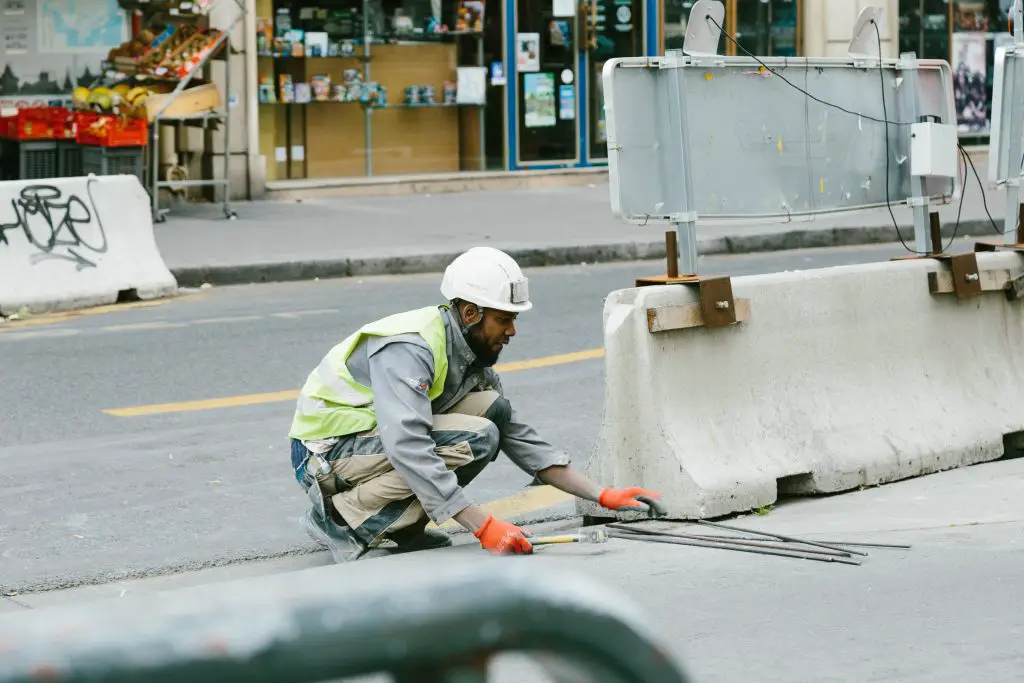Construction safety is an important topic that should never be taken lightly. But unfortunately, accidents can happen quickly and easily when it comes to construction. Hence, taking the necessary precautions to ensure a safe working environment is essential. Many people do not realize just how many risks construction can present. From heights to machines and chemicals to materials, it is important to stay informed of the potential hazards and devise a plan of action for each one.

To help protect yourself, your employees and everyone else on site, here are some tips for improving construction safety:
Create a Comprehensive Safety Plan
Having a comprehensive safety plan in place is essential for any construction project. This strategy should include information about how the job site will be set up, the materials used, and any possible hazards that could be present. The plan should also outline steps for responding to accidents or injuries onsite. A good safety plan can help reduce risk and give everyone on the job site a sense of security.
Vehicle Safety
At a construction site, vehicles are often used to transport materials and personnel. These vehicles must be properly maintained and operated safely. One common jobsite vehicle is the Ford Ranger because of its efficiency. You can check Ford Ranger reviews for more information on the vehicle. Additionally, all drivers should be trained and certified for the different sizes and types of vehicles. This can help minimize the risk of an accident occurring onsite. Vehicle Safety is essential at any construction site, and ensuring vehicles are maintained and operated properly can help minimize risks.
For those involved in agricultural and construction projects, maintaining vehicle safety extends to scenarios like Saskatchewan farm equipment hauling. Similar diligence in maintenance and operation minimizes transport-related mishaps, ensuring that both construction and farming equipment reach their destinations safely and efficiently.
Provide Proper Education and Training
It is also important to provide proper education and training to all workers on the job site. This includes training them about safety protocols and guidelines as well as giving them hands-on knowledge of tools and equipment they may not have used before. Having adequately competent workers can help prevent accidents from occurring in the first place by ensuring that everyone knows what they’re doing and how best to do it safely.
Come Up with a Safety Incentive Program
Creating a safety incentive program can effectively motivate workers to follow safety protocols and procedures. For example, a simple “safety star” system can be established, where workers are rewarded for following safety guidelines or preventing accidents. In addition, it can help create an atmosphere of accountability and encourage everyone on the job site to stay safe and take the necessary precautions for their well-being.
Encourage Open Communication
Encouraging open communication between workers is critical to creating a safe working environment. By having open lines of communication between everyone involved in the project, issues can be addressed before they become safety hazards. In addition, workers should feel comfortable speaking up about any concerns or questions they may have about their work or the job site itself. This helps to create a team atmosphere and ensures that everyone is always aware of potential risks.
Make Everyone Responsible and Involve
All workers should practice proper safety protocols and procedures, and any changes or modifications should be discussed with the whole team before implementation. Also, supervisors and managers need to take accountability for ensuring that all safety measures are followed at all times. So everyone has the same knowledge of safety protocols and procedures and can work together to prevent accidents from happening.
Implement Regular Safety Inspections
Regular safety inspections of the job site are essential for ensuring that all safety protocols and procedures are followed. These inspections should be conducted by a qualified professional who can identify any potential hazards or areas that need improvement. It is also important to document these inspections so that you can track any changes over time.
Top-Notch Safety Equipment
It’s crucial to provide top-notch safety equipment to all workers on the job site. This includes hard hats, gloves, protective eyewear and harnesses. This equipment can help save workers from potential hazards and should be checked regularly for any signs of damage or wear and tear. Moreover, invest in the best quality tools and equipment you can afford to reduce any risk of malfunctions or accidents on the job site.
Conclusion
Overall, there are many ways to improve construction safety onsite. From having a comprehensive safety plan to providing proper education and training, implementing regular safety inspections and investing in top-notch safety equipment, employers can help ensure the safety of their workers. With these tips, you can create a safe working environment and reduce risks associated with construction projects. Does your workplace use any additional safety measures? Leave them in the section below for comments.


